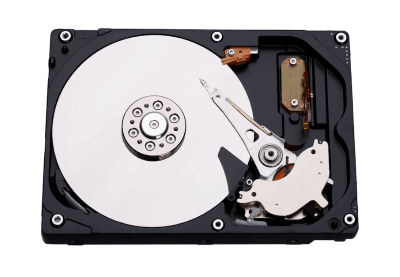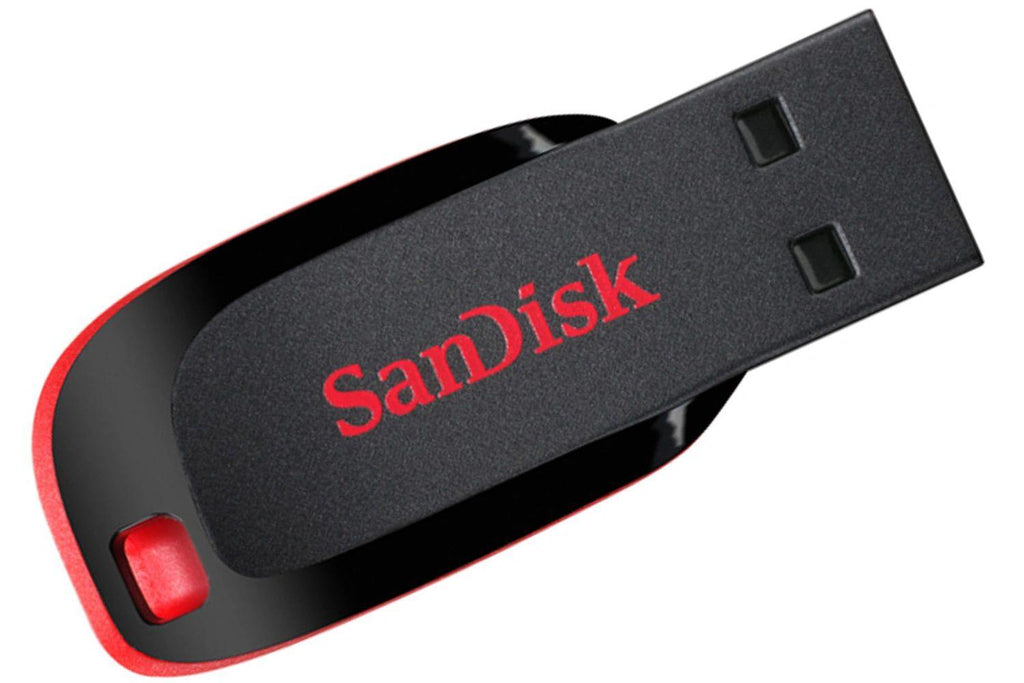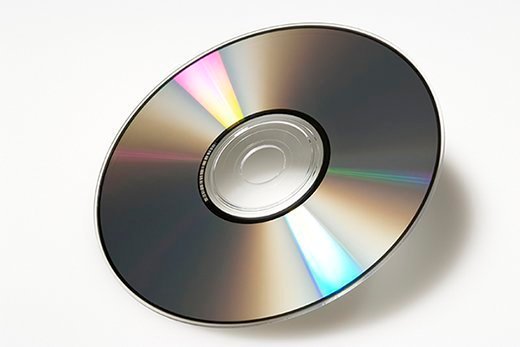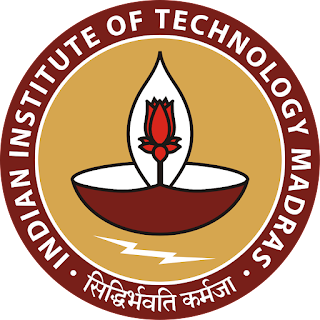Computer Devices
2.1 CPU
The CPU, or Central Processing Unit, is often referred to as the "brain" of a computer. It's a hardware component that serves as the primary processing unit in a computer system. The CPU interprets and executes instructions from computer programs, performing calculations, managing data, and coordinating the activities of other hardware components.
Components of a CPU:A CPU consists of several key components:
Control Unit (CU): The control unit coordinates and manages the execution of instructions. It fetches instructions from memory, decodes them, and coordinates the appropriate operations to carry out those instructions.
Arithmetic Logic Unit (ALU): The ALU performs arithmetic operations (addition, subtraction, multiplication, division) and logical operations (AND, OR, NOT) on data. It's responsible for the actual computation and manipulation of data.
Registers: Registers are high-speed storage units within the CPU that temporarily hold data and instructions that are being used immediately. They play a crucial role in speeding up data access and processing.
Cache Memory: Cache memory is a smaller, faster memory located close to the CPU. It stores frequently used data and instructions, reducing the time it takes for the CPU to access them from main memory.
Clock and Clock Speed: The CPU operates on a clock that synchronizes its activities. The clock speed, measured in Hertz (Hz), determines how many cycles of instructions the CPU can execute per second. A higher clock speed generally leads to faster processing.
2.2 Types of Memory (Primary and Secondary)
- Primary memoryincludes ROM and RAM, and is located close to the CPU on the computer motherboard, the CPU to read data from primary memory very quickly. It is used to store data that the CPU needs immediately so that it does not have to wait for it to be delivered.
- Secondary memory by contrast, is usually physically located within a separate storage device, such as a hard disk drive or solid state drive (SSD), which is connected to the computer system either directly or over a network. The cost per gigabyte of secondary memory is much lower, but the read and write speeds are significantly slower.
Although many types of memory in a computer exist, the most basic difference is between primary memory, often called system memory, and secondary memory, which is more commonly called storage. The key difference between primary and secondary memory is speed of access.

2.3 RAM
The most important things to understand about RAM are that RAM memory is very fast, it can be written to as well as read, it is volatile (so all data stored in RAM memory is lost when it loses power) and, finally, it is very expensive compared to all types of secondary memory in terms of cost per gigabyte.
DRAM:
DRAM stands for Dynamic RAM, and it is the most common type of RAM used in computers. The oldest type is known assingle data rate (SDR) DRAM, but newer computers use faster dual data rate (DDR) DRAM. DDR comes in several versions including DDR2 , DDR3, and DDR4, which offer better performance and are more energy efficient than DDR.
SRAM:
stands for Static RAM, and it is a particular type of RAM which is faster than DRAM, but more expensive and bulker, having six transistors in each cell. For those reasons SRAM is generally only used as a data cache within a CPU itself or as RAM in very high-end server systems.
2.4 ROM
- PROM
- EPROM
- EEPROM.
ROM stands for read-only memory, and the name indicate the fact that while data can be read from this type of computer memory, data cannot normally be written to it. It is a very fast type of computer memory which is usually installed close to the CPU on the motherboard. ROM is a type of non-volatile memory, which means that the data stored in ROM persists in the memory even when it receives no power – for example when the computer is turned off. In that sense it is similar to secondary memory, which is used for long term storage.
Types of ROM
ROM is available in several different types including
2.5 PROM
- PROM stands for Programmable Read-Only Memory, and it is different from true ROM in that while a ROM is programmed (i.e. has data written to it) during the manufacturing process.
- Unlike RAM (Random Access Memory), the data in PROM cannot be modified or erased once it's programmed.
- E.g. Cell phones, video game etc
- Characteristics of PROM:
- Non-Volatile: PROM retains its programmed data even when the power supply is removed.
- Read-Only: As the name suggests, the data in PROM can only be read, not written, hence the term "Read-Only Memory."
- One-Time Programming: PROM can be programmed only once, and the data becomes permanently fixed.
- Stable and Reliable: Since PROM doesn't require power to maintain its data, it's a stable and reliable storage solution.
- Cost-Effective: PROM is typically less expensive than other programmable memory options like EEPROM (Electrically Erasable Programmable Read-Only Memory) or Flash memory.
2.6 EPROM
- EPROM stands for Erasable Programmable Read-Only Memory, and as the name suggests, data stored in an EPROM can be erased and the EPROM reprogrammed.
- It can be erased & reprogrammed about multiple times .
- Erasing an EPROM involves removing it from the computer and exposing it to ultraviolet light. It takes 40 minutes to erased.
- E.g. Micro-controllers
- Characteristics of EPROM:
- Reprogrammability: EPROM can be erased and reprogrammed multiple times, making it more flexible than one-time programmable memory like Mask ROM or OTP PROM.
- Non-Volatile: Similar to other non-volatile memories, EPROM retains its data even when power is turned off.
- UV Erasure: Erasing EPROM requires exposing the chip's memory cells to UV light. The duration of exposure depends on the specific EPROM model and the desired data erasure.
- Limited Endurance: EPROM has a limited number of erase/write cycles. Repeated exposure to UV light and programming/erasing can cause degradation over time.
2.6.1 EEPROM
- EEPROM stands for Electrically Erasable Programmable Read-Only Memory.
- It is programmed & erased electrically
- It can be erased & reprogrammed about 10000 times.
- Both erased programmed take about 4 to 10 ms.
- E.g BIOS
- Characteristics of EEPROM:
- Electrically Erasable: Unlike EPROM, EEPROM can be erased and reprogrammed electrically without requiring UV light.
- Non-Volatile: EEPROM retains data even when power is turned off, making it suitable for storing configuration settings and small amounts of persistent data.
- Endurance: EEPROM chips have a finite number of erase/write cycles. Wear-leveling techniques help distribute these cycles evenly, extending the chip's lifespan.
- Size and Capacity: EEPROM is typically used for storing relatively small amounts of data, as compared to other memory technologies like Flash memory.
2.7 Secondary Storage Devices
The secondary storage devices which are built into the computer or connected to the computer are known as a secondary memory of the computer. It is also known as external memory or auxiliary storage.
Hard Disk

- The hard disk is also known as a hard drive.
- It is a rigid magnetic disc that stores data permanently, as it is a non-volatile storage device.
- The hard disk is located within a drive unit on the computer's motherboard and comprises one or more platters packed in an air-sealed casing.
- The data is written on the platters by moving a magnetic head over the platters as they spin.
- The data stored on a computer's hard drive generally includes the operating system, installed software, and the user's files and programs, including pictures, music, videos, text documents, etc.
Pen Drive(PD)

- Pen drive is a compact secondary storage device.
- It is also known as a USB flash drive, thumb drive or a jump drive.
- It connects to a computer via a USB port.
- It is commonly used to store and transfer data between computers.
- For example, you can write a report using a computer and then copy or transfer it in the pen drive. Later, you can connect this pen drive to a computer to see or edit your report.
- You can also store your important documents and pictures, music, videos in the pen drive and keep it at a safe place.
Compact-Disk(CD)

- Compact Disk is a portable secondary storage device in the shape of a round medium disk.
- It is made of polycarbonate plastic.
- The concept of CD was co-developed by Philips and Sony in 1982. The first CD was created on 17 August 1982 at the workshop of Philips in Germany.
- In the beginning, it was used for storing and playing sound recordings, later it was used for various purposes such as for storing documents, audio files, videos, and other data like software programs in a CD.
2.8 I/O Devices
2.8.1 Scanners
- A scanner is an electrical device that reads and converts documents such as photos and pages of text into a digital signal.
- This changes the documents in a form that can be viewed and or modified on a computer system by using software applications.
- There are numerous kinds of scanners available in the market that have different resolutions.
- They are also available in various sizes, configurations, etc., and can be assembled as per the requirement of the end-user.
- While some are specifically built for scanning black and white documents only, others can also scan color documents.
- Feed-in or Sheet-fed Scanners:
These are simple scanners that have the limitation of scanning paper documents only as they have a feeder tray that takes in the paper kept in the tray. Thus, scanning anything in book form is not possible here. However, few advanced models do have the option of scanning several pages in sequence. - Flatbed Scanner:
This is very commonly used and available in the markets readily. These have a flat surface for screening with a cover that must be lifted to place the material that has to be scanned. This model is viable for scanning books like magazines, educational content that is bound to be bulky. - Handheld scanners:
These are essentially used to scan barcodes, thus useful for business transactions and general use. Other scanners like the overhead scanner, the big format scanner, slide or negative scanners are also available in the market.
Types of Scanners
2.8.2 Digitizers
A digitizer is a device that receives, processes and records digitally any analog information such as light, sound, touch, or pressure. For example, a digital camera can be considered as a digitizer, as it takes analog light information and converts it to a digital picture. The process of translating data from the analog version to its digital form is called digitization.
2.8.3 Plotters
- A plotter is a type of printer that prints vector graphics.
- It is a piece of computer gear that converts computer commands into paper line drawings.
- It draws a line with one or more automatic pens.
- Unlike a traditional printer, a plotter uses a pen, marker, pencil, or other writing tools to draw multiple rather than toner.
- It may also use vector graphics files or commands to draw continuous point-to-point lines.
- Though it was previously widely used for computer-aided design, it is now only used to print hard copies of schematics and other comparable application.
2.8.4 LCD
LCD is a flat display technology, stands for "Liquid Crystal Display," which is generally used in computer monitors, instrument panels, cell phones, digital cameras, TVs, laptops, tablets, and calculators. It is a thin display device that offers support for large resolutions and better picture quality. The older CRT display technology has replaced by LCDs,
2.9 Network Devices
Hardware devices that are used to connect computers, printers, fax machines and other electronic devices to a network are called network devices. These devices transfer data in a fast, secure and correct way over same or different networks. Network devices may be inter-network or intra-network.
2.9.1Hub
- Active Hub:- These are the hubs that have their power supply and can clean, boost, and relay the signal along with the network. It serves both as a repeater as well as a wiring center. These are used to extend the maximum distance between nodes.
- Passive Hub:- These are the hubs that collect wiring from nodes and power supply from the active hub. These hubs relay signals onto the network without cleaning and boosting them and can’t be used to extend the distance between nodes.
- Intelligent Hub:- It works like an active hub and includes remote management capabilities. They also provide flexible data rates to network devices. It also enables an administrator to monitor the traffic passing through the hub and to configure each port in the hub.
A hub is a basically multi-port repeater. A hub connects multiple wires coming from different branches, for example, the connector in star topology which connects different stations. Hubs cannot filter data, so data packets are sent to all connected devices Also, they do not have the intelligence to find out the best path for data packets which leads to inefficiencies and wastage.
2.9.2 Switch
Switch is a network device that connects other devices to Ethernet networks through twisted pair cables. It uses packet switching technique to receive, store and forward data packets on the network. The switch maintains a list of network addresses of all the devices connected to it.
On receiving a packet, it checks the destination address and transmits the packet to the correct port. Before forwarding, the packets are checked for collision and other network errors.
The data is transmitted in full duplex mode
2.9.3 Router
- It offers advanced routing, flow control, and traffic isolation.
- They are configurable, allowing the network administrator to create policies based on routing decisions.
- It can select the best path across the internetwork using dynamic routing algorithms.
- It can reduce network traffic by establishing collision domains as well as broadcast domains.
- A router is more expensive than a bridge or a repeater.
- They are protocol-dependent devices that must comprehend the protocol they are transmitting.
- The router is slower than bridges or repeaters because it must analyze data transmission from the physical to the network layer.
A router is a network device similar to a switch that routes data packets based on their IP addresses . The router is primarily a Network Layer device. A router is also known as an intelligent device because it can automatically calculate the best route to pass network packets from source to destination. A router examines a data packet's destination IP address and uses headers and forwarding tables to determine the best way to transfer the packets. It communicates between two or more networks using protocols such as ICMP.
Advantages of Router
Disadvantages of Router
2.9.4 Bridge
A bridge operates at the data link layer. A bridge is a repeater, with add on the functionality of filtering content by reading the MAC addresses of the source and destination. It is also used for interconnecting two LANs working on the same protocol.
2.9.5 Gateway
A gateway, as the name suggests, is a passage to connect two networks that may work upon different networking models. They work as messenger agents that take data from one system, interpret it, and transfer it to another system. Gateways are also called protocol converters and can operate at any network layer. Gateways are generally more complex than switches or routers. A gateway is also called a protocol converter.
2.9.6 Modem
Modem is a device that enables a computer to send or receive data over telephone or cable lines. The data stored on the computer is digital whereas a telephone line or cable wire can transmit only analog data.
The main function of the modem is to convert digital signal into analog and vice versa. Modem is a combination of two devices − modulator and demodulator. The modulator converts digital data into analog data when the data is being sent by the computer. The demodulator converts analog data signals into digital data when it is being received by the computer.
2.9.7 Repeater
A repeater is a two-port device that operates at the physical layer . It is used to regenerate the signal over the same network before it becomes too weak or corrupted, allowing the signal to be transmitted for a longer distance over the same network. It is important to understand that repeaters do not amplify the signal. When the signal weakens, repeaters copy it bit by bit and regenerate it at its original strength.
2.9.8 Access Point
A wireless device is typically meant by the term access point (AP), even though it technically refers to a wired or wireless connection. The Data Link layer of the OSI model is where an access point (AP) operates. An access point can function as a router or bridge, passing data transmissions from one access point to another. Wireless access points (WAPs) are devices that combine a transmitter and receiver (transceiver) to form a wireless LAN (WLAN). Access points are typically standalone network devices with an antenna, transmitter, and adapter built in.


No comments:
Post a Comment